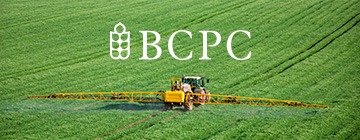
Tramline thinking
8th August 2016Many farmers voted for Brexit in order to reduce unnecessary red tape and legislation that they consider harmful to their businesses. However, it is hard to believe that the current environmental standards they are called on to achieve will be relaxed. For instance, the EU drinking water directive has an unscientifically set very low maximum for pesticide content in drinking water at the tap. Will Brexit change this? I really doubt it. Despite the difficulty this directive causes, it is only right that consumers have confidence in the water they drink. Relaxing the standard would be a hard sell.
Around the turn of the millennium, I was involved in an EU research project that aimed to reduce soil erosion on a landscape scale. It was led by the Burgermeister of a small German town who was fed up with the underground car parks filling up with silt after a heavy rain. One of the main findings was that around 80% of the water running off the surface of the cultivated area of fields was from tramlines; in that water were pesticides and nutrients. This came as a profound shock to me and to the farmers at the meetings at which the results were presented.
This result, along with other projects, initiated efforts by the Voluntary Initiative and by pesticide manufacturers to reduce surface run-off from the cultivated field via tramlines. Many of the advised mitigation measures are common sense but the pressure remains to reduce further the pesticide levels in surface waters.
HGCA (now AHDB) funded a large project on establishing tramlines. The report concludes that “….. it is predominantly the substantial soil compaction which may be caused during the autumn spraying operation (mediated by soil conditions at that time) which is primarily responsible for the risk of run-off and diffuse pollution over winter months; rather than the lack of good ground cover from emerging vegetation”.
The details in the report of the conditions at the time of the use of tramlines are scant. I think the tramlines were established shortly after sowing winter wheat and there was only one pass in the replicated experiments. As the short summary of results I have quoted implies, sown tramlines were investigated. They appeared to be more successful in reducing run-off when very low tyre pressures were adopted but overall their impact was disappointing when tramlines were first used at, I think, crop pre-emergence or very early post-emergence. The results may have been different if the sown tramlines were first adopted at a later crop growth stage. However, sown tramlines come with the problem at harvest of later maturing plants.
Another conclusion is that using a self-propelled rotary harrow behind the rear tyres of the spray vehicle will reduce water flow along the tramlines. This is entirely logical but of course such a cultivator may not be as effective where there are multiple passes along the tramlines under wet conditions during the autumn/winter.
The project also modelled the impact of improved tramline management on a landscape scale. It came to the same conclusion as we did all those years ago in our EU project. Identifying high risk fields for water run-off is crucial. Getting it right in these fields has a disproportional benefit for the whole catchment. It is crucially important that each farm makes a real effort to identify high risk fields.
Getting it right, particularly in high risk fields, includes minimising the number of passes along the tramlines during the autumn/winter through crop choice/rotation as well as minimising soil compaction in the tramlines; this involves both the timing of the spraying operation and careful choice of tyres and tyre pressures on the spray vehicle. There is additional information on these issues on the Voluntary Initiative website and through the WaterAware App.
Improving water infiltration rates in the whole field is also important. One obvious way of achieving this is to use soil amendments regularly. However, most organic manures contain levels of nutrients which may increase the risk posed by nitrate and phosphate levels in the water lost from the field. Research work carried out by NIAB TAG, in a project funded by The Morley Agricultural Foundation, shows that green waste compost, which contains relatively low levels of nutrients, can substantially improve infiltration rates for a few years after application.
In addition, there needs to be a commonsense approach to the placement of tramlines. For instance, entering a field at the top of the slope is important because it prevents water running down the outside tramlines having a direct route out of the field. Naturally, establishing a grass based strip alongside any water course at the bottom of the field will reduce surface run-off. This strip has to be complete and will be more effective if there is a tramline, not connected to other tramlines, running in the parallel direction.
Tramline management is an important issue where Controlled Traffic is adopted and becomes an even greater challenge in fields where the risk of surface water run-off is already high. Great care needs to be taken on the layout of tramlines as well as their day-to-day management because minimising compaction can have a particular environmental premium.
So the message is that it comes down to common sense. Thankfully, farmers are usually extremely good at observing what is going on in their fields and using common sense measures to reduce problems

